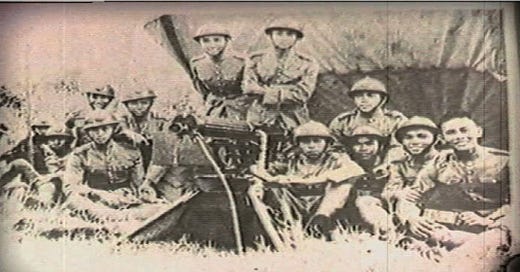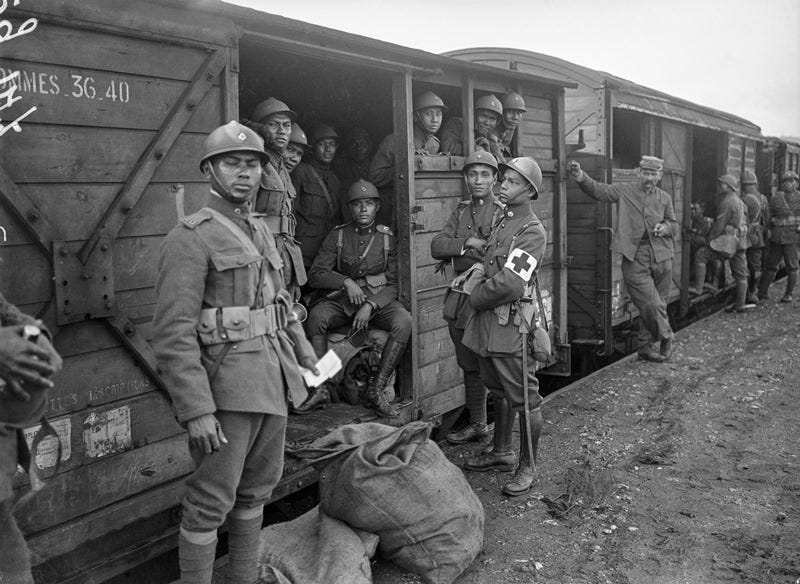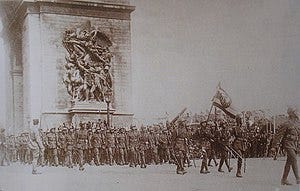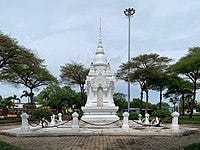World War One involved several countries from North and South America to East Asia. The most well-known Asian country that participated in the Great War was Japan, which joined the Entente and took over most of Germany’s colonial possessions in the Pacific. One would be surprised that the Kingdom of Thailand, or Siam, was also involved in the First World War.
At the start of the war, Siam declared its neutrality in 1914. Though heavily dominated by German marketing and commerce, Siam leaned further with the British diplomatically. However, the rice trade was dominated by the British. Many princes involved in policy-making within the kingdom, including Prince Chakrabongse, supported the Entente. The king himself, Rama VI, was educated in Britain. There was heavy British influence throughout the government and this led to Siam officially declaring war on the Central Powers in 1917. Joining the war would allow the king to strengthen Siam's position in the international arena and strengthen the monarchy in the Siamese state.
On the 22nd of September, 1917, Siam officially declared war on the Central Powers. German businesses, assets, and property were seized by the Siamese government. 9 German vessels in the Chao Phraya River were then seized by the Siamese Navy, with the 7 largest vessels of the 9 being given to the Entente. It was the only state in Asia to join the conflict willingly as an equal of the European powers, rather than as part of their colonial contingents.
Siam would change their flag in response to being aligned with the Entente powers. Taking inspiration from France, Britain, and Russia, King Rama VI ordered changes made to the Siamese national flag. He would change their flag from the original white elephant on a red background to the red, white, blue, red, and white pattern we see today as modern Thailand’s flag.
That same month, the Siamese Expeditionary Force would be sent to France. It consisted of medical support, motor transport, and pilots. By early 1918, 1,284 men were selected from thousands of volunteers for the Expeditionary Force. Major General Phraya Thephatsadin would command the newly scrambled up force, which was to be sent to Marseilles, France. Unfortunately, the pilots would not see combat as they were deemed unfit for high-altitude combat and had to be retrained in France. The force would see the Second Battle of the Marne alongside the Entente forces on August 1. In addition, the medical and motor transport detachments were sent to the front and took part in the 1918 Champagne and Meuse-Argonne offensives. The infantry units had distinguished themselves under fire and were awarded the Croix de Guerre and the Order of Ramma. After the armistice, the Siamese forces would occupy a small town in the Rhineland known as Neustadt an der Haardt. The flag was raised over the town and caused confusion as the civilians expected the French.
At the end of the war, Siam participated in the Treaty of Versailles, signing it and being a founding member of the League of Nations. During the war, 19 Siamese soldiers died: two before departing for France, and the rest due to accidents or disease. The World War Volunteers Memorial would be built in central Bangkok honoring the lives of the Siamese Expeditionary Force and their service. The last veteran of the Siamese Expeditionary Force, Yod Sangrungruang, died on October 9, 2003, at the age of 106.
Siam is not known or recognized for its participation in World War One as it was overshadowed by other notable members such as Japan in the Far East. Nevertheless, they still contributed to the creation of the League of Nations and helped bring Siam to the international stage. By 1925, the U.S., Britain, and France would abandon their extraterritorial rights in Siam.










